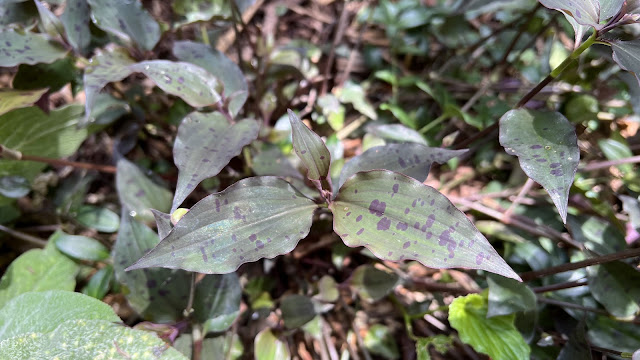Plant Talk on the Summer Solstice
I just came into the cool after two hours of (sweating) vigorous soil amending (sweating) and planting (sweating) in the garden. (Did I mention sweating?) It feels really good in here. I might have to stay in the rest of the day. Oh, who am I kidding?! The flit of a butterfly's wings, a zipping bee in flight, or the glint of sun off a flower or leaf will catch my couch-bound eye, and I'll have to head back out.
One thing I was thinking about while I was out there (sweating), was a plant that has become one of my favorites, Tinantia pringlei.
 |
In our garden, Tinantia pringlei grows happily in full sun and almost as happily in darn near full shade. |
For me, it grows in loamy clay with very little input. (I am cruel enough to be a gardener; I give a plant the best start in the best place I can, water it in well, and then it's almost hands-off. I say "almost" because I'm not a straight-up murderer, people. We all know plants do better with a bit of care through the first year.) I've planted it in barely to fairly amended soil, in full sun, part sun, and darn near full shade. It does equally as well in part sun as full sun, as long as it isn't absolutely parched for too long. Even then, it is so forgiving. Once or twice, our dog Jack Jack peed on it twenty times too often in the same week. I simply chopped it down to the crown (the plant, not Jack Jack) and in a few weeks, no one was the wiser.
 |
| Those leaves... speckled deliciousness! |
The trio-petaled flowers are quite small--barely three-quarters of an inch, if that--and of a soft yet very legible pinkish lavender.
 |
| Tiny blooms can somehow be seen from across the garden. |
 |
| Happy New Year! Tinantia will not be deterred by Lycoris radiata foliage, even on December 31, 2022. |
That's pretty crazy, isn't it? I don't know of many other perennials that bloom that long in my garden. (I just re-read that last sentence and almost busted out laughing. I definitely don't have ANY other perennials that long-blooming!)
 |
| One of the best companion plants that sparkles and shines, and brings out the best of its bed-mates... what's not to love?? |
With great traits, good looks, and a tough-as-Texas disposition, Tinantia pringlei is one of my favorite plants. And, as I type this, a cardinal bathing in the bird bath has caught my attention. See? I told you it would happen.
I think I'll head back out to celebrate the Summer Solstice, the longest day of the year, by... well... sweating. Sweating while I admire my plantings of Tinantia pringlei.
Your garden (last photo) looks spectacular! Love the diversity of colors!
ReplyDeleteAww, thanks, Anne!
DeleteYour garden is what my yard aspires to be.
ReplyDeleteI promise it isn't nearly as impressive as it might seem in curated photos, Kenn, but I thank you nonetheless.
Delete